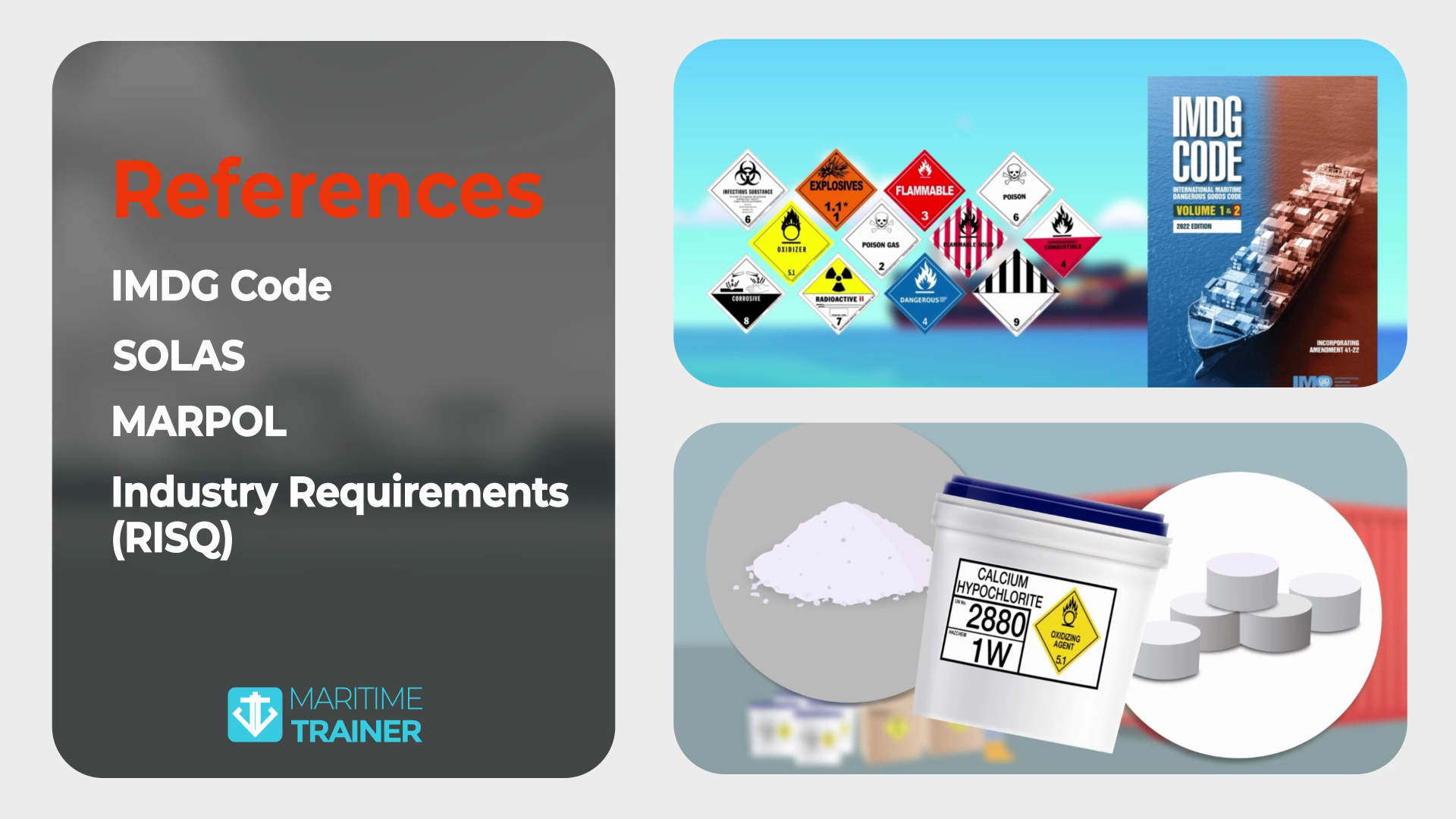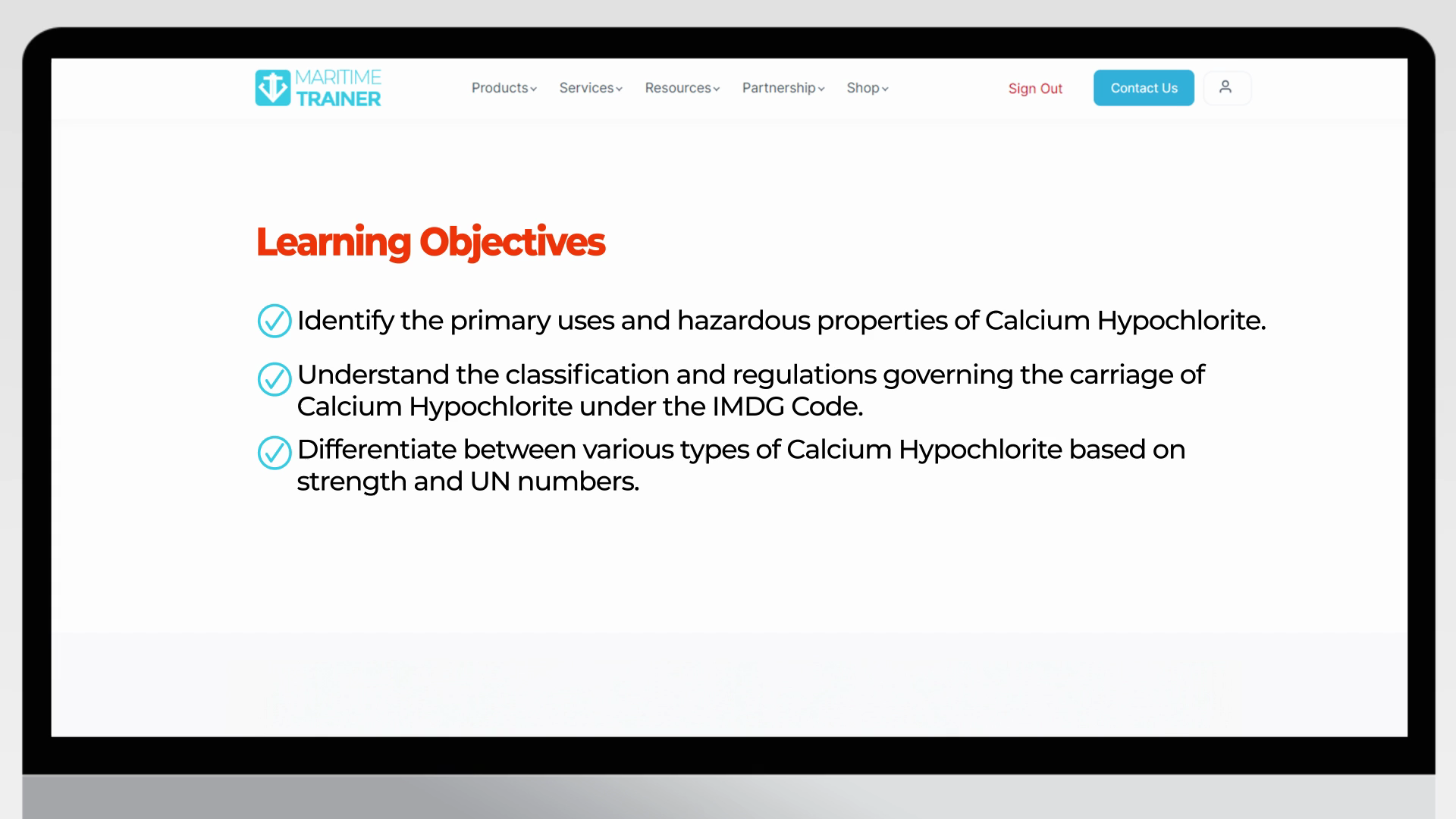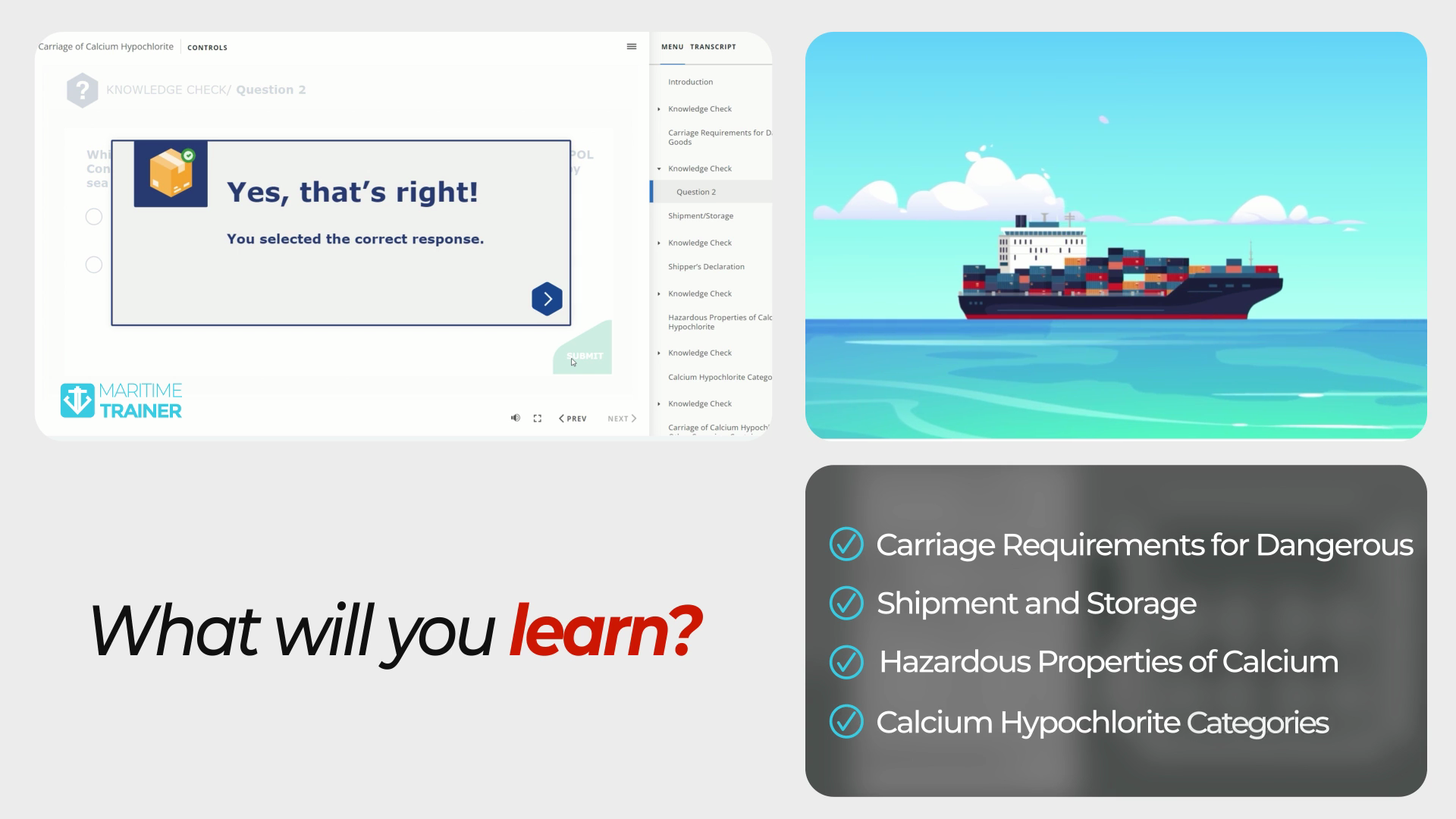Mastering the Safe Carriage of Calcium Hypochlorite: A Vital Training for Maritime Professionals
In the maritime industry, the safe transport of hazardous materials is paramount to ensuring the safety of the crew, vessel, and cargo. One such hazardous substance is calcium hypochlorite, a powerful oxidizer commonly used for water purification and sanitation. If mishandled, this chemical can pose significant risks, including fire and explosion hazards. Therefore, mastering the safe carriage of calcium hypochlorite is crucial for maritime professionals involved in container ship operations.
Why Calcium Hypochlorite Requires Special Attention
Calcium hypochlorite is a widely used chemical in various industries, including maritime, where it plays a critical role in water purification. However, due to its reactive nature, calcium hypochlorite must be handled with extreme care, especially when transported in containers. Improper handling or storage can lead to dangerous incidents such as fires or explosions, making it essential for maritime personnel to follow strict safety protocols.
Hazards Associated with Calcium Hypochlorite
Calcium hypochlorite is classified as a hazardous material under the International Maritime Dangerous Goods (IMDG) Code due to its oxidizing properties. When exposed to heat, moisture, or incompatible substances, it can decompose and release chlorine gas or even cause combustion. To prevent such risks, it is essential to follow proper packaging, stowage, and segregation practices during transportation.
Challenges of Transporting Calcium Hypochlorite by Sea

Transporting hazardous materials like calcium hypochlorite in a maritime environment presents unique challenges. Factors such as confined spaces, humidity, temperature fluctuations, and vessel movement require specialized handling and storage techniques. Below are some of the key challenges faced during the carriage of calcium hypochlorite:
1. Confined Spaces:
Essential Safety Protocols and Regulations
To safely transport calcium hypochlorite, maritime professionals must adhere to several international safety standards and regulations. These regulations are designed to prevent incidents and ensure the safe handling of hazardous materials at sea.
IMDG Code Compliance
The International Maritime Dangerous Goods (IMDG) Code is the primary regulatory framework governing the safe transport of dangerous goods by sea. It outlines specific requirements for packaging, labeling, stowage, and segregation of hazardous materials, including calcium hypochlorite. Understanding and applying these regulations is crucial for ensuring safe operations.
RISQ Industry Requirements
In addition to the IMDG Code, maritime professionals must also comply with RISQ industry requirements, which provide further guidelines on handling and transporting dangerous goods. These standards help mitigate the risks associated with hazardous materials and ensure that vessels and crews remain safe during transit.
Other Relevant Regulations
The Importance of Comprehensive Training
Given the complexities and risks associated with transporting calcium hypochlorite, maritime professionals need comprehensive training to navigate these challenges effectively. Our Carriage of Calcium Hypochlorite in Containerscourse is designed to equip deck personnel with the knowledge and skills needed to handle this chemical safely.

What You’ll Learn:
- Chemical Properties and Hazards: Understand the hazardous properties of calcium hypochlorite and the risks associated with improper handling and storage.
- IMDG Code Regulations: Gain detailed knowledge of the regulations governing the carriage of calcium hypochlorite, including proper packaging, stowage, and segregation practices.
- Safety Protocols: Learn essential safety measures, such as using personal protective equipment (PPE), following safety checklists, and adhering to confined space procedures.
- Risk Mitigation: Understand how to prevent incidents by following best practices and complying with international safety standards.
Who Is This Course For?
Our Carriage of Calcium Hypochlorite in Containers course is specifically designed for maritime professionals working on container ships, particularly those involved in cargo handling and hazardous material management. It is ideal for:
- Deck Personnel (Management, Operational, and Support)
- Container Ship Crews
- Professionals Handling Hazardous Cargo
Why This Course Is Essential for Your Career


Designed by industry experts with extensive experience in maritime operations, this course provides practical, real-world insights that are essential for safe and efficient transport of hazardous materials. Completing this course will enhance your understanding of calcium hypochlorite's risks and help you implement the necessary safety measures to protect both your crew and your vessel.
By investing in this training, you’ll not only ensure compliance with the IMDG Code, RISQ, SOLAS, and MARPOL, but also contribute to safer and more efficient maritime operations.
Conclusion
Handling and transporting hazardous materials like calcium hypochlorite requires specialized knowledge and skills. By enrolling in our Carriage of Calcium Hypochlorite in Containers course, maritime professionals can ensure they are well-prepared to safely manage the challenges associated with this powerful chemical. Through comprehensive training and adherence to safety regulations, you can significantly reduce the risks involved and ensure the safety of your crew and vessel.
Enroll today and take the next step toward mastering the safe carriage of hazardous materials at sea.




